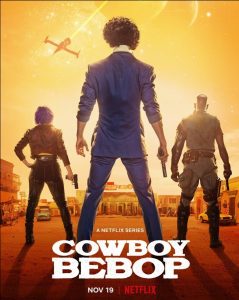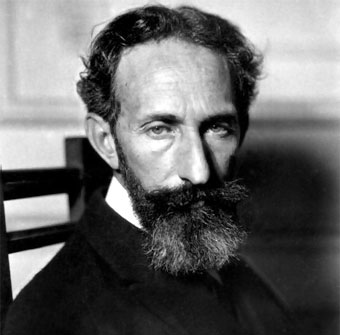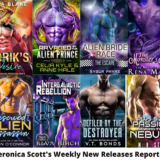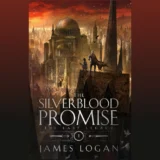
Cowboy BeBop (live-action series)
Official Website: Netflix: Cowboy Bebop
Most likely you were a either fan of the 1998 anime about a quirky crew of space-faring bounty hunters with a checkered past or you’d never heard of them before Netflix decided to drop a live-action version on the world. I fall into the first camp, but trust me, as a professional reviewer I’m totally able to maintain my objectivity. Well, I can try.
Shinichirō Watanabe’s 1995 anime featured a noir/cyberpunk vibe, adult characters with a wild mis of ennui and energy, and a rich musical tapestry that was as much a character as the brew of the Bebop itself. The opening theme, a bebop jazz number by Yoko Kanno perfectly channels the discordant energy of the series. Set after the Earth has been largely evacuated owing to the explosion of a hypergate on the moon and subsequent rain of rocks, much as Neal Stephenson’s would later envision in his novel Seveneves written twenty years later. It’s a mashup of genres. Noir, Comedy, Westerns, Post-Apocalytism, and of course Science Fiction. Watanabe was keenly aware of the ongoing dialog that science fiction contains, and the series pays homage to everything from 2001 A Space Odyssey to Alien. Widely regarded as one of the best sci-fi anime out there, the live-action version, which Netflix announced in 2017, had big shoes to fill.
A few sizes too big.
The challenge for any beloved tale to make it from the original form, whether it’s a book (The Expanse, Lord of the Rings), tv-show (Star Trek TOS), or anime (Ghost in the Shell, Cowboy BeBop) is to meet the expectations of the fan audience while engaging a new and hopefully larger audience of newbies. It’s hard to get it right, not just because casting can throw off the core group, as Steven Strait’s “Miller” did for me on The Expanse, though I came to love his take, but because the broader audience doesn’t have the context for cult vehicles and there’s a tendency to overexplain for their benefit. Which is guaranteed to annoy the hardcore.
Both issues raise their heads in the new Cowboy Bebop. Spike’s character lacks much of his cynicism and emotional detachment, Jet is suddenly mooning over the daughter he left behind, and Faye, rather than the barracuda we’ve known and loved, is emotionally vulnerable. These aspects were probably there to some degree in the original characters, but kept comfortably under the surface, teased out only after we’d gotten to get to know them.
Teasing out backstory is a fundamental trope of science fiction, and fans of the genre will quickly smell condescension if too much is explained to them. For the uninitiated, too much left unexplained leaves them unable to connect with the characters and settings. So the creators have to walk a fine line. The Expanse does it by showing the hardships of living in the belt, Bebop does it by just telling you everything they think you need to know.
That everyone involved with the project is a fan of the original, as John Cho (Spike) said in his NPR interview, is no doubt true. Bringing Cowboy Bebop to life may not be possible for real live actors, though I’m sure they gave it their best shot. As a faithful rendition of the anime series then, the new show falls short. It’s easy to say to fans of the original that they should just view it on its own merits, which has its own problems as it’s been recast for a wider audience with the aforementioned different needs, but it’s virtually impossible for fans to not compare the two side by side. Especially when the new series takes its storylines from the old, but plays fast and loose with the order and composition of the episodes. The result creates a kind of dissonance similar to what’s known in robotics as “The Valley of the Weird,” where things are off just enough to feel …wrong.
The 2017 movie version of the 1995 Ghost in the Shell, suffered from the same problem. Much of the work done by the live-action players was choreographed to match the anime, but no matter how much CGI you add in, Scarlett Johansen just can’t match Major Kusanagi’s moves or her aloofness.
The path forward for projects like this isn’t to match the original but to build on it. That’s problematic for Cowboy Bebop because Watanabe intentionally limited the original to a single 26 episode season story arc because he didn’t want it to become an endless Star Trek sort of franchise. Ironically, he’s a consultant on the new series.
If you’re new to Cowboy Bebop, it may work for you, though the live-action series owes more to cop shows of the 70s and 80s than to the Quentin Tarantino vibe we might have hoped for. If you’re a fan of the original, you’re probably suffering both disappointment and cognitive dissonance. For you, I offer this simple tip. Look at it as an alternate universe version rather than a translation of the original. That makes both the overlap and the differences perfectly reasonable. If not perfectly conceived. Still, it might find its audience and come back for another season, something the original couldn’t hope for.
One last note. When I watch a movie in a foreign language with subtitles, I wind up remembering it with the actor’s voices in English. Thinking about the live-action Cowboy Bebop, I’m remembering the scenes in anime. Weird, huh?
…see you space cowboy.










